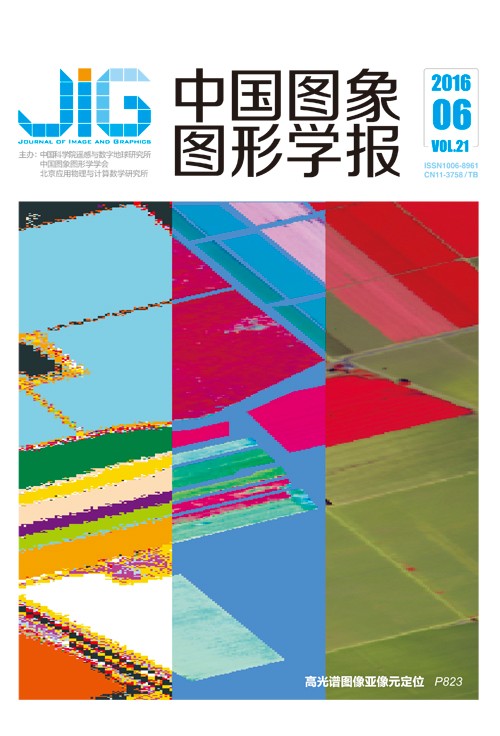
视觉信息损失先验的图像分层去雾方法
胡子昂1, 王卫星1,2,3, 陆健强1, 石颖1(1.华南农业大学电子工程学院, 广州 510642;2.国家生猪种业工程技术研究中心, 广州 510642;3.广东省农情信息监测工程技术研究中心, 广州 510642) 摘 要
目的 针对自然场景下含雾图像呈现出低对比度和色彩失真的问题,提出一种基于视觉信息损失先验的图像去雾算法,将透射图预估转化成求解信息损失函数最小值的目标规划问题。方法 首先通过输入图像的视觉特性将图像划分成含雾浓度不同的3个视觉区域。然后根据含雾图像的视觉先验知识构造视觉信息损失函数,通过像素值溢出映射规律对透射率取值范围进行约束,采用随机梯度下降法求解局部最小透射率图。最后将细化后的全局透射率图代入大气散射模型求解去雾结果。结果 结合现有的典型去雾算法进行仿真实验,本文算法能够有效地复原退化场景的对比度和清晰度,相比于传统算法,本文算法在算法实时性方面提升约20%。结论 本文算法在改善中、浓雾区域去雾效果的同时,提升了透射图预估的效率,对改善雾霾天气下视觉成像系统的能见度和鲁棒性具有重要意义。
关键词
Image dehazing using visual information loss prior
Hu Zi'ang1, Wang Weixing1,2,3, Lu Jianqiang1, Shi Ying1(1.College of Electronic Information, South China Agricultural University, Guangzhou 510642, China;2.National Engineering Research Center for Breeding Swine Industry, Guangzhou 510642, China;3.Guangdong Engineering Research Center for Monitoring Agricultural Information Condition, Guangzhou 510642, China) Abstract
Objective Image dehazing is inherently an ill-posed problem that involves the extraction of interesting targets from a static image or a video sequence. Such technology is expected to attract wide application in high-level image processing and visual engineering. Transmission estimation is the primary task in single image haze removal. The inhomogeneous fog distribution in a degraded image can lead to false estimations in the transmission estimation process. This paper proposes an image dehazing method that uses prior visual information loss. Given that a hazy image in a natural scene generally exhibits low contrast and chromatic distortion, we ignore the transmission estimation and instead solve the optimization problems of the information loss function. Method First, the proposed method divides hazing images into three vision areas according to fog density. Second, the loss function, which is built based on the visible characteristics of hazy images, solves the local minimum transmission via the stochastic gradient descent method. Third, the divided dehazed areas are fused via multi-scale illuminance image segmentation with a linear filter. Fourth, the scene albedo is recovered by employing an atmospheric scattering model that uses global transmission. The proposed and existing dehazing methods are qualitatively and quantitatively evaluated to assess their image dehazing performance. Result The experimental results show that the proposed algorithm effectively removes haze from the degraded image and achieves higher-quality, halo-free, and detailed restorations than the existing dehazing methods. On the average, the proposed method achieves 20% higher-quality restorations than the classic haze removal algorithms. Conclusion The proposed method significantly enhances image visibility and demonstrates better image haze removal performance than the existing dehazing methods. Compared with the state-of-the-art method, the proposed algorithm is more successful in recovering images from moderate to thick foggy areas and is faster in real-time dehazing applications. The multi-scale and patch-based structure of our method allows us to reduce the running time in neighborhood operations. Future studies can use this method to improve prior knowledge on the effective evaluation mechanism of image dehazing.
Keywords
image dehazing visual information loss prior optimization problem transmission separation human visual perception
|



 中国图象图形学报 │ 京ICP备05080539号-4 │ 本系统由
中国图象图形学报 │ 京ICP备05080539号-4 │ 本系统由